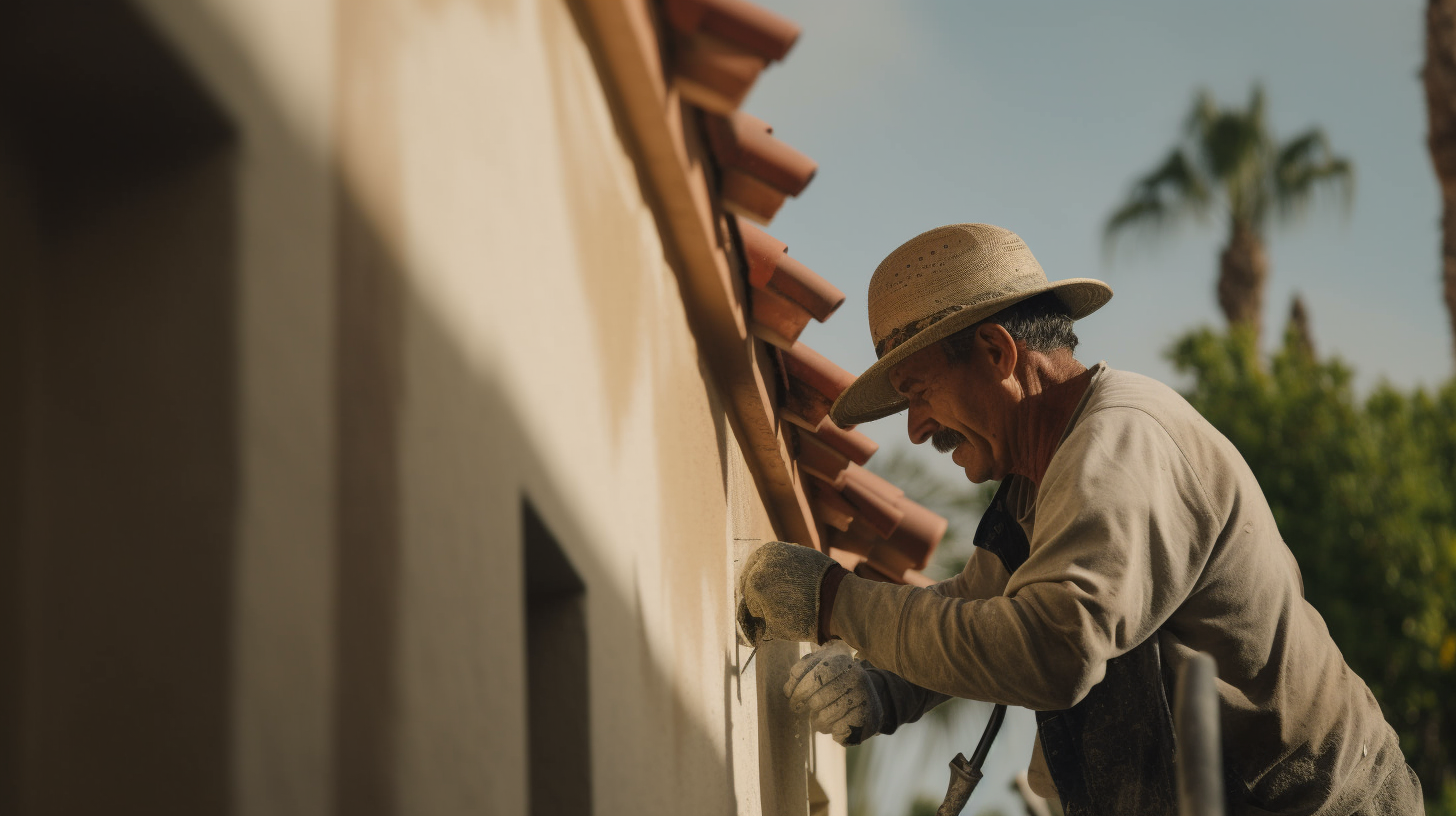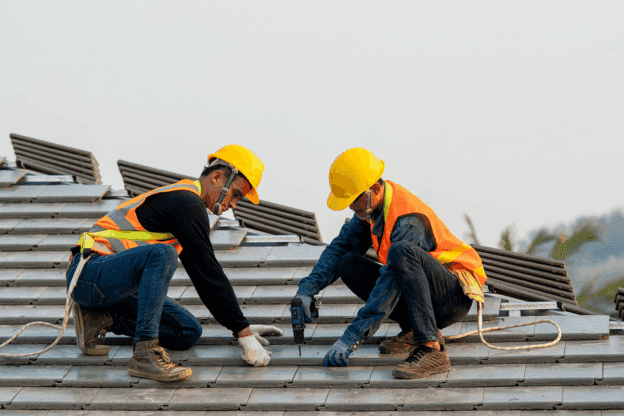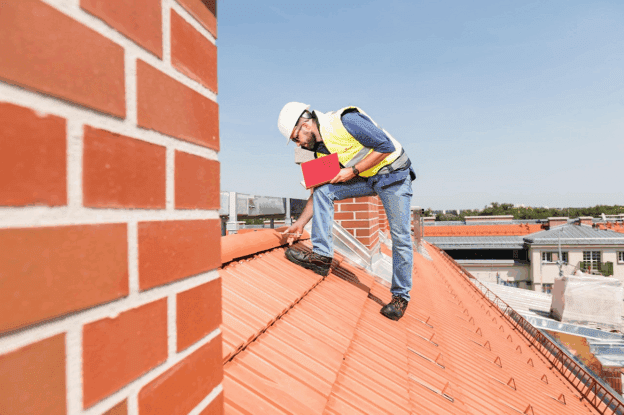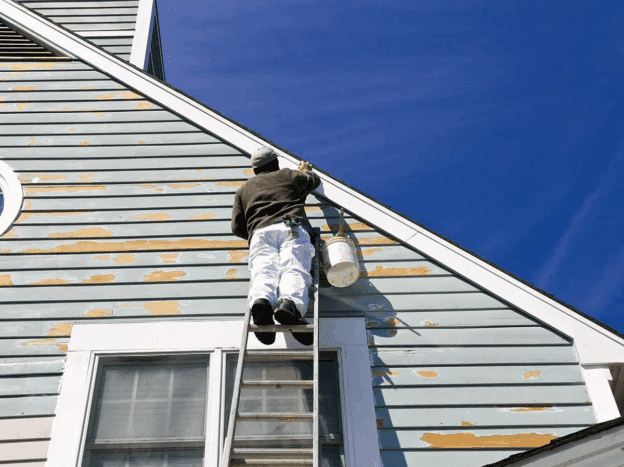
The Best Stucco Repair Techniques for Different Types of Damage
Stucco, known for its durability and aesthetic appeal, can suffer from various types of damage over time, from cracks and chips to more extensive wear and tear. Understanding the right stucco repair techniques for each kind of damage is essential to maintain the integrity and appearance of stucco surfaces.
This guide delves into effective methods for stucco repair, providing practical solutions to common issues and ensuring that stucco surfaces look their best for years to come.
Identifying Common Types of Stucco Damage
Stucco can encounter various forms of damage, each requiring different repair approaches. Recognising these issues early helps in addressing them effectively and maintaining the stucco’s appearance and longevity.
- Cracks: Often caused by temperature changes or settling, cracks can range from hairline to larger splits. Hairline cracks are typically cosmetic, while larger ones may require more extensive repairs.
- Chips: Chips usually result from impacts or wear and tear. They can vary in size and may need to be filled and blended to match the surrounding stucco texture.
- Peeling: Peeling stucco is often a sign of moisture problems or poor application. This can lead to further damage if not addressed promptly, requiring cleaning and reapplication.
- Blistering: Blistering occurs when moisture gets trapped beneath the stucco surface, causing bubbles or blisters. This issue needs to be resolved by drying out the area and repairing the damaged stucco.
- Discoloration: Discolouration or fading can be caused by UV exposure or staining. Regular cleaning and sealing can help maintain the stucco’s color and appearance.
Properly identifying these types of damage allows for timely and effective repairs, helping to prolong the life of stucco surfaces.
Repair Strategies for Cracks and Chips
Cracks and chips in stucco not only affect the appearance but can also lead to more significant issues if left unaddressed. For hairline cracks, a simple stucco patch can usually suffice. Begin by cleaning the crack thoroughly, removing any loose debris. Apply a crack filler or caulk designed for stucco and smooth it out. For larger cracks, a more robust approach is needed.
This involves widening the crack slightly to ensure the patch material adheres properly, then applying a stucco patching compound. For chips, you’ll need to apply a stucco mix to fill the void and then blend it with the surrounding area to ensure a seamless finish. Regular maintenance and timely repairs can prevent these issues from escalating and maintain the overall integrity of the stucco.
Fixing Water Damage in Stucco Surfaces
Water damage is a serious concern for stucco surfaces as it can lead to mold growth and structural issues. Identifying the source of water intrusion is the first step in fixing the damage. Common culprits include poor drainage, roof leaks, or cracked gutters. Once the source is addressed, the affected stucco area needs to be thoroughly dried out. This may involve removing any damaged stucco and allowing the underlying surface to dry completely.
Apply a waterproof sealant or primer to the affected area before reapplying new stucco. It’s also essential to ensure that any underlying issues contributing to the water damage are resolved to prevent future problems. Properly repairing water damage not only restores the stucco’s appearance but also safeguards against long-term structural harm.
Addressing Stucco Expansion and Contraction Issues
Stucco is susceptible to expansion and contraction due to temperature fluctuations, which can lead to cracking and other damage if not properly managed. To address these issues, expansion joints are crucial. These joints allow the stucco to expand and contract without causing damage. Regular inspections can help identify areas where expansion joints might be necessary.
When installing new stucco, ensure that it’s applied over a properly prepared and stable substrate. This preparation includes using a mesh or reinforcing layer that can accommodate movement. If cracks have already formed due to expansion and contraction, they should be repaired with a flexible stucco patch that can move with the surface. Proper installation and maintenance can significantly reduce the risk of damage caused by expansion and contraction.
Replacing and Matching Stucco Texture
When repairing stucco, matching the existing texture is key to achieving a seamless finish. Replacing stucco involves applying a new layer that blends with the old, both in color and texture. Start by cleaning and preparing the area to be patched, ensuring that it adheres properly. For texture matching, it’s helpful to use a sample of the original stucco texture or consult with a professional who can replicate the style.
Techniques for matching texture include using brushes, sponges, or specialized tools to create a similar effect. After applying the new stucco, let it cure properly before painting or sealing. Taking the time to match the texture ensures that the repair is not only functional but also visually cohesive with the rest of the surface.
Techniques for Patch Repairs and Finishing
Patch repairs and finishing are crucial for restoring stucco surfaces to their original condition. Effective techniques ensure a smooth, cohesive appearance that blends seamlessly with the existing texture.
- Clean the Damaged Area: Thoroughly remove any loose stucco and debris from the damaged section to prepare it for a solid repair. This step is essential for proper adhesion of the new stucco.
- Apply a Stucco Patch Compound: Use a stucco patching compound to fill in the damaged area. Apply it with a trowel, ensuring the compound is well-mixed and evenly spread to create a level surface.
- Layering for Larger Patches: For substantial damage, build up the repair in layers. Allow each layer to dry completely before applying the next, ensuring a strong and durable finish.
- Smooth and Blend the Surface: Once the patch has dried, use sandpaper to smooth the surface. This step helps blend the new stucco with the existing texture, creating a seamless finish.
- Prime and Paint: After sanding, apply a primer to the patched area to enhance adhesion and prepare the surface for painting. Use a paint that matches the existing stucco color for a uniform look.
Following these steps ensures a professional finish that prolongs the life of the stucco surface.
Preventing Future Stucco Damage
Preventing stucco damage involves regular maintenance and timely repairs. Start by inspecting stucco surfaces for any signs of wear or damage, such as cracks, chips, or discoloration. Ensuring proper drainage around the building is crucial, as poor drainage can lead to water damage. Regularly clean stucco surfaces to remove dirt and debris that can cause wear over time. Applying a high-quality sealant can help protect against moisture and UV damage.
Additionally, addressing minor issues promptly can prevent them from escalating into more significant problems. By staying proactive with maintenance and repairs, stucco surfaces can remain in excellent condition, extending their lifespan and maintaining their visual appeal.
Repairing Stucco After Structural Shifts
Structural shifts can cause significant issues with stucco, leading to cracks and other forms of damage. When repairing stucco after such shifts, the first step is to address the underlying structural issues that caused the movement. This might involve foundation repairs or addressing issues with framing. Once the structural problems are resolved, the stucco can be repaired.
Begin by removing any loose or damaged stucco and cleaning the area. Apply a stucco patch or new layer, ensuring it is properly bonded to the underlying surface. For larger shifts, it may be necessary to use reinforcement materials or mesh to provide additional support. Properly addressing both the structural and stucco repairs ensures long-term stability and prevents recurring issues.
Choosing the Right Stucco Repair Products
Selecting the right stucco repair products is crucial for ensuring lasting repairs and a seamless finish. The choice of materials affects not only the durability but also the appearance of the repair work.
- Stucco Patch Compounds: Choose a high-quality stucco patch compound that matches the existing texture and color. For cracks and chips, these compounds should offer good adhesion and flexibility to accommodate slight movements.
- Waterproof Sealants: A waterproof sealant protects against moisture intrusion and prolongs the life of repairs. Apply it to areas prone to water exposure to prevent damage and maintain the integrity of the stucco.
- Primer: Use a primer that is compatible with both the old stucco and the repair materials. Primers enhance the bond between the new stucco and the existing surface, ensuring a smooth, uniform finish.
- Stucco Mix: When resurfacing or patching large areas, select a stucco mix that closely matches the original in texture and color. This helps to achieve a cohesive look and blends seamlessly with the existing stucco.
- Reinforcement Mesh: For larger repairs, reinforcement mesh provides additional support and stability. This mesh helps to prevent cracking and enhances the strength of the new stucco layer, ensuring a durable repair.
Choosing the right products is essential for effective and lasting stucco repairs.
Addressing stucco damage promptly and effectively is crucial for maintaining both the appearance and integrity of stucco surfaces. From identifying common issues like cracks and chips to employing the right repair strategies and products, each step plays a vital role in achieving lasting results. Understanding these techniques ensures that repairs are not only visually seamless but also durable.
For professional assistance in stucco repair, Tidal Remodeling offers expert services tailored to meet specific needs and challenges. For a detailed assessment and high-quality repairs, contact Tidal Remodeling at +1 (760) 990-7890. Don’t wait until minor issues become major problems—reach out today for reliable stucco repair solutions.



